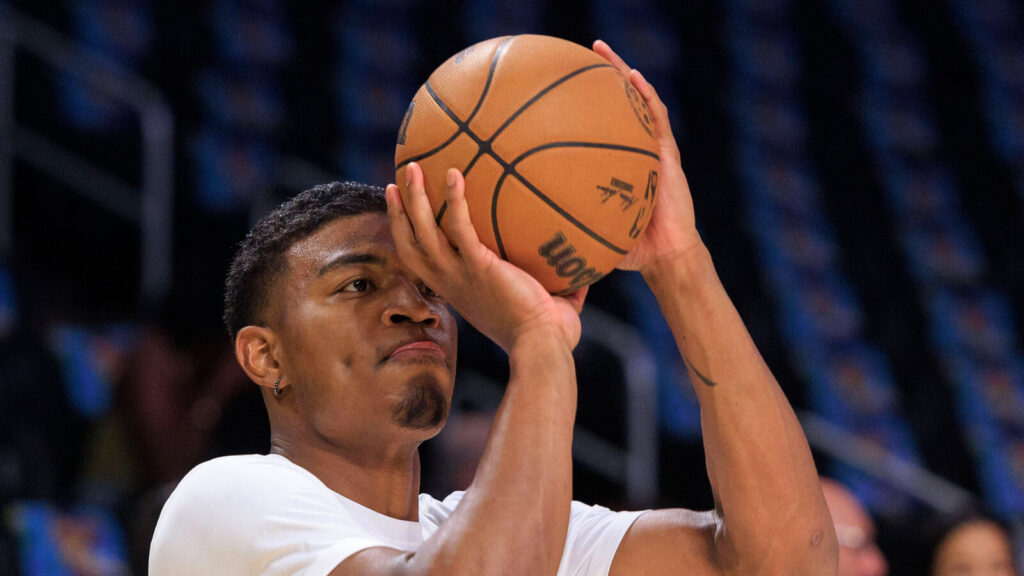Numbers run the NBA. Numbers help to measure every game, every play, and every performance of the players effectively. Points, assists, and rebounds stand out among the many stats that define player and team rankings. They are hence a yardstick for measuring a successful team and a player’s influence on the game. By knowing how points, assists, and rebounds impact rankings, fans, analysts, and teams can look at performance.
The Power of Points
Scoring is the number one statistic in basketball. Points decide the fate of every game, while high-scoring players almost always receive notoriety and accolades. Typically, scoring is best measured per shot attempted, but it can be argued that not all points are created equal. You can check the current top scorer of the ongoing NBA season to know its significance.
Field Goal Percentage and Shot Selection
A player’s shooting percentage defines his scoring efficiency. A player scoring 30 points on 40 percent shooting is less effective than another scoring 25 points on 55 percent shooting. Shot selection plays a huge role in efficiency. Players who pick high-quality shots like open three-pointers or easy layups contribute greatly to the scoring efficiency of their teams.

Free Throws and Three-Point Shooting
Players who can shoot free throws and threes show their worth. Free throws are easy points and can also change the momentum of the game. Top Three-point shooters open the floor for their teammates. Analytics further magnified the importance of these shots, altering the offensive scheme of the NBA.
Impact on Team Success
Scoring ability usually corresponds to team ranking. High-scoring teams grab the offensive limelight, provided they know the importance of balance. If the primary one or two scorers are shut down by the defense, that team is going to struggle. The best teams share the scoring load through many players, making it hard for opponents to focus on one scorer.
The Role of Assists: Creating Opportunities
Assists measure the playmaking and ball movement of the team. In the current NBA seasons, it has been seen that teams with higher assist numbers have ranked higher. High assist numbers mean good ball-sharing and good screen-setting for open shots.

The Importance of Playmakers
Great playmakers feed their teammates. A magician with a pass will free his shooters, allow fast break opportunities, and target weaknesses on the defense. Some players have a penchant for being spectacular with the assist while others choose simple, conservative passes that keep the offense running smoothly.
Assists vs. Isolation Play
High assist averages are generally associated with organized offenses. On the contrary, teams that thrive on isolation depend on their most talented players to get a shot. In the right moments, an isolation play can work, but the real recipe for the success of a team lies in ball movement and creating open looks.
Assist-to-Turnover Ratio
Not every playmaker is effective. An assist-to-turnover ratio is an indicator of a player’s ability to create opportunities while limiting mistakes. A high ratio means a very efficient playmaker; a low ratio means imminent danger for the team. Teams with disciplined playmakers have an edge in very close games.
Impact on Team Performance
Teams that rank high in assists usually have unselfish offenses. Passing the ball forces the defense to react to it, thus creating a better window for scoring. Championship teams usually have high assist statistics, showing just how important teamwork can be.

Rebounds: Deterrence of Possessions
Rebounding counts on offense and defense. It determines how many opportunities a team receives and how well they deny their opponents second-chance points. The ongoing NBA season has shown some great rebounds by a lot of good players.
Offensive Rebounds and Second-Chance Points
Offensive rebounds lead to extra opportunities for scoring. In addition to opening up angles of attack on a bad shooting night, an excellent rebounding team can bail itself out by securing extra possessions. High offensive rebounders provide the biggest bang for the buck, even if they rarely put points on the board.
Defensive Rebounds and Transition Pursuit
While defensive rebounding works strongly against second-chance opportunities for the opponent, it also prevents easy switch offense. In addition, the best defensive rebounders are the players who can score in transition after transition.
Size vs. Positioning
Height matters in rebounding, but appropriate positioning and hustle are equally if not more important. Many elite rebounders have refined their skills from timing and hustle instead of height alone. Boxing out, reading shot trajectories, and anticipating bounces distinguish the great from the average.
Rebounding and Team Success
Rebounding is a big factor in ranking the teams. Teams that part with rebounding gain possession, therefore scoring opportunities. Many championship teams rank high in rebounds, thus emphasizing their significance in winning games.

How These Stats Interconnect
While points, assists, and rebounds are discussed separately, their unity is what defines team success. The combination of these statistics helps the teams rank higher which can be seen in the current NBA rankings.
Fast Break and Transition Running
Rebounding leads to assists and transition baskets; in other words, rebounding opens up opportunities for easy baskets. A team that rebounds and shares the face well creates open scoring opportunities. This up-tempo offense is tough to defend and raises the team’s ranking.
Defensive Impact
Defensive rebounds inhibit an opponent’s scoring, while assists signal an ability to dismantle the defensive fortification. Teams that are adept in both areas tend to receive a good defensive rating that translates to overall success.
Conclusion
Thus, the conclusion summarizes a balance between stats and winning. It is no longer “points, points, points” for NBA rankings; assists create opportunities, rebounds affect a team’s possessions, and efficiency measures effectiveness. Teams excelling in all three areas will consistently rank higher and compete in fine company at the end of the season.
For players, these stats educate them on how to shape their roles. Scorers must score efficiently; playmakers have to limit their turnovers; rebounders will secure possessions. The best players bring at least a two-pronged attack, further boosting their teams.
Today’s NBA is backed by stats in decision-making. To tell the story of the impact on either player or team success, numbers would have to be the driving factor. To succeed, it’s not just a matter of scoring but excelling in every aspect of basketball competition.
